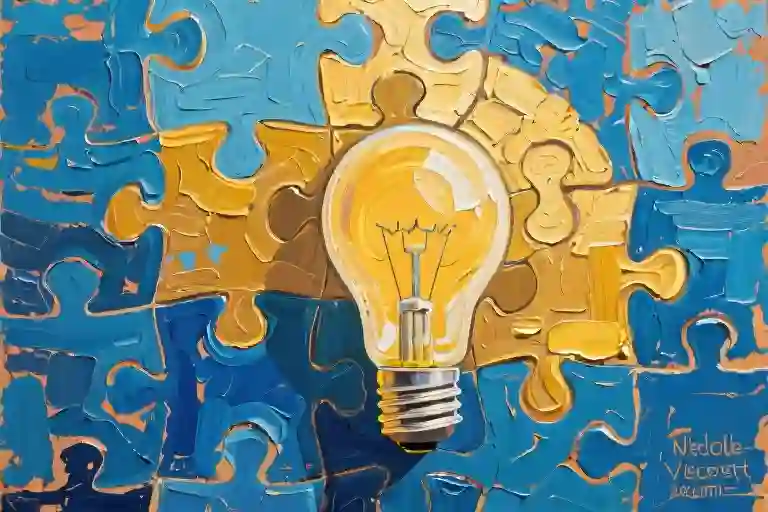The spotlight felt like a physical weight on my shoulders as I stood on the podium, smiling through the applause for my latest book. Camera flashes bounced off the gold-lettered award in my hands. That morning, I’d been interviewed as ‘the prolific writer who defies conventional productivity.’ What nobody saw was how I’d spent the previous evening sobbing on the bathroom floor because the tag in my sweater had felt like sandpaper against my skin.
This dissonance defined my life – external achievements piling up while internal chaos escalated. I could deliver a keynote speech to hundreds, yet panic when the barista asked ‘How’s your day?’ The harder I worked to appear competent, the more fraudulent I felt. My brain operated on unpredictable rhythms: hyperfocus that powered all-night writing sessions, then days staring at emails I couldn’t force myself to answer.
Friends called it ‘quirky genius.’ Therapists suggested anxiety disorders. I cycled through productivity hacks and meditation apps, each failure reinforcing the belief that my fundamental wiring was defective. The turning point came during a routine physical when my new doctor flipped through old records. ‘Did you know you were diagnosed with ADHD at eleven?’ she asked. The prescription pad in her hand might as well have been a roadmap to myself.
That yellowed diagnosis slip became the first edge piece in what I’d later understand as my neurodivergent puzzle. For three decades, I’d been trying to assemble my identity with the wrong instructions, mistaking neurological differences for moral failings. The revelation didn’t erase my challenges – if anything, it illuminated how much energy I’d wasted compensating for a brain that simply processed the world differently. But for the first time, the question shifted from ‘What’s wrong with me?’ to ‘How does my mind actually work?’
This awareness arrived like corrective lenses for my self-perception. Suddenly, childhood struggles made sense – the way classroom chatter scrambled my thoughts, how recess felt like sensory assault. My adult coping mechanisms revealed themselves: the elaborate systems to remember basic tasks, the exhaustion from mimicking social cues. Even my writing process clicked into place – the hyperfocus that editors praised was actually my ADHD brain’s intermittent reward system kicking in.
Most profoundly, I began recognizing patterns that extended beyond ADHD. The way fluorescent lights made my skin crawl wasn’t distraction; it was sensory sensitivity. My social awkwardness wasn’t shyness but a different communication style. When autism spectrum disorder entered the diagnostic conversation, it wasn’t a shock but a relief – the missing interior pieces of my puzzle finally settling into place.
What my AuDHD diagnosis offered wasn’t excuses, but explanations. The same brain that forgot appointments could recall obscure sports statistics from decades prior. The sensitivity that made parties unbearable also let me capture emotional nuances in my writing. I wasn’t broken; I was running a different operating system in a world designed for neurotypical hardware.
That awards ceremony now symbolizes my pre-diagnosis life – performing competence while privately unraveling. Today, I still struggle with executive dysfunction and sensory overload, but the shame has lifted. Understanding my neurodivergence didn’t change my brain’s wiring, but it transformed my relationship with it. Where I once saw malfunctions, I now recognize alternative processing methods – not better or worse, just distinct. The real award was finally meeting myself.
The Misfit Genius: My Pre-Diagnosis Struggles
The classroom smelled of chalk dust and pencil shavings, that particular elementary school scent that still triggers my fight-or-flight response decades later. I’d be staring out the window counting cloud shapes when suddenly – snap – the teacher’s ruler would hit my desk. ‘Pay attention!’ she’d bark, as if focus were a faucet I could simply turn on. My report cards read like broken records: ‘Bright but doesn’t apply herself.’ ‘Capable if she’d just try harder.’
What nobody understood – what I didn’t understand myself – was that trying harder burned through my limited attention reserves like rocket fuel. By third grade, I’d developed an elaborate system of covert doodling that let me anchor my wandering mind to the lesson. The margins of my notebooks bloomed with geometric patterns, each shape representing a fragment of the lecture I’d managed to catch. Teachers saw a distracted child. I was actually building the first of many coping mechanisms that would let me navigate a world not designed for my neurodivergent brain.
Fast forward twenty years, and the contradictions only deepened. There I was, a published author signing books at a literary festival, then walking three blocks in the wrong direction because I’d forgotten where I parked. The same brain that could hyperfocus through an 18-hour writing marathon would blue-screen at basic life admin. Friends joked about my ‘absent-minded professor’ vibe, not realizing the exhaustion behind the self-deprecating laughs.
The statistics sting in hindsight: according to CDC research, 75% of women with ADHD receive at least one misdiagnosis before identifying the real culprit. We’re labeled anxious, depressed, or simply ‘too much’ – anything but neurodivergent. I collected diagnoses like merit badges – generalized anxiety, dysthymia, even bipolar II at one point – while the root cause remained invisible.
What cuts deepest isn’t the memory of failed spelling tests or missed appointments, but the persistent voice whispering: ‘You’re failing on purpose.’ That’s the cruelest myth about high-functioning neurodivergence – the assumption that because we can achieve, our struggles must be voluntary. The truth was messier: my brain operated on alternating currents of hypercompetence and utter overwhelm, with no apparent logic to the switches.
The workplace became a minefield of unspoken rules I couldn’t decipher. Office small talk left me mentally winded, though I could discuss narrative structure for hours. Colleagues mistook my sensory overload (those buzzing fluorescent lights!) for aloofness. I developed what I now recognize as autistic masking techniques – scripting conversations, mimicking facial expressions – a performance so draining it required two hours of solo recovery for every hour of socializing.
Even my victories felt fraudulent. When my book hit bestseller lists, all I could fixate on were the three unchecked voicemails and unpaid internet bill waiting at home. The gap between my capabilities and my challenges didn’t compute – not to others, not to myself. If I could write a 300-page manuscript, why did remembering to take out the trash feel like solving a quadratic equation?
Looking back, the signs seem obvious. The way I’d organize my toys by color instead of playing with them. The hours spent researching obscure interests while basic hygiene fell by the wayside. The meltdowns when routines changed without warning. But without the framework of neurodiversity, these weren’t symptoms – they were personal failings.
We talk about ADHD and autism spectrum traits as if they’re items on a checklist, when really they’re more like weather patterns – sometimes mild breezes, other times category five hurricanes. My particular neurodivergent cocktail meant craving structure while being terrible at maintaining it, needing social connection but finding interaction exhausting, possessing extraordinary focus that refused to activate on demand.
The cruelest irony? My coping mechanisms worked just well enough to keep me from seeking answers. That’s the trap of high-functioning neurodivergence – you’re just functional enough to slip through diagnostic cracks, but never quite functional enough to feel at home in your own mind.
The ADHD and Autism Puzzle: How Two Diagnoses Finally Made Sense of Me
It started with a routine doctor’s visit at thirty-one. The kind where you answer questions absentmindedly while counting ceiling tiles. Then my physician said something that made the tiles stop mattering: ‘Did you know you were diagnosed with ADHD at eleven?’ My medical records had quietly held this secret for two decades while I struggled through school, careers, and relationships feeling like everyone else got an instruction manual I’d missed.
Getting rediagnosed as an adult felt like finding the edge pieces to a lifelong puzzle. Suddenly there were names for why I could hyperfocus for hours yet forget lunch, why conversations left me mentally bruised, why my brain seemed to have seventeen browser tabs open simultaneously. ADHD explained the racing thoughts, the abandoned hobbies, the chronic lateness that no amount of guilt could fix. But something still didn’t fit.
Then came the autism assessment – the missing center pieces clicking into place. The social exhaustion I’d blamed on introversion. The meltdowns after ‘good days’ spent masking. The way fluorescent lights felt like needles and certain fabrics might as well be sandpaper. What looked like quirks were actually sensory processing differences. My need for rigid routines wasn’t obsessive, it was protective. The diagnosis didn’t change who I was, but it changed how I understood myself.
Neurodivergence isn’t about brokenness – it’s about different wiring. ADHD gives me the rapid-fire creativity to connect seemingly unrelated ideas, while autism provides the depth to explore them thoroughly. One makes me jump from topic to topic; the other makes me dive deep until I hit bedrock. Together they create a mind that’s distractible yet obsessive, socially anxious yet deeply empathetic, chaotic yet ritualistic. The contradictions finally made sense.
What I once called ‘laziness’ was executive dysfunction. What I dismissed as ‘oversensitivity’ was neurological sensory processing. That ‘weirdness’ people noticed? Just a different operating system trying to function in a world designed for neurotypical hardware. Realizing I wasn’t failing at being normal, but rather succeeding at being me, lifted a weight I didn’t know I’d been carrying.
For anyone else fitting together these same puzzle pieces: your brain isn’t wrong, just differently right. The exhaustion comes from trying to force square pegs into round holes day after day. Understanding your neurotype isn’t an excuse – it’s the foundation for building systems that actually work with your neurology rather than against it. The journey isn’t about fixing yourself, but about finally meeting yourself.
The Neurodivergent Mind: Wired Differently, Not Broken
For years I blamed myself for what I now understand are neurological differences. The constant mental chatter, the way fluorescent lights made my skin crawl, the exhaustion after pretending to follow office small talk – none of these were moral failures or personal weaknesses. They were signs of a brain operating on a distinct operating system.
The default mode network in neurodivergent brains doesn’t quiet down like it should. Imagine trying to work while someone leaves multiple browser tabs open with videos playing simultaneously – that’s what focusing often feels like with ADHD. The autistic part of my AuDHD experience adds another layer: sensory inputs don’t get filtered properly. A tag on a shirt isn’t just mildly annoying; it’s a relentless distraction that makes coherent thought nearly impossible.
Society often mistakes these neurological differences for character flaws. ‘Try harder’ becomes the default advice for executive dysfunction, as if willpower could rewire prefrontal cortex connectivity. The truth is, no amount of effort changes how dopamine receptors function in an ADHD brain or how sensory processing occurs in autism. Recognizing this biological reality lifted a weight I didn’t know I’d been carrying.
Understanding neurodiversity through the spectrum metaphor changed everything. Like colors blending in a gradient, ADHD and autism traits combine uniquely in each person. Some of us have intense hyperfocus abilities but struggle with transitions. Others excel at pattern recognition while finding eye contact physically painful. These aren’t contradictory traits but different expressions of the same neurological variations.
The medical model calls them deficits. The neurodiversity paradigm recognizes them as differences. Neither perspective is entirely wrong, but the latter allows for something revolutionary: self-acceptance. When I stopped trying to force my square-peg brain into round-hole expectations, I discovered the advantages of my neurotype. That same sensitivity to shirt tags makes me notice subtle emotional shifts others miss. The ADHD tendency to jump between ideas fuels creative problem-solving.
This isn’t about romanticizing challenges. Executive dysfunction still derails my plans. Sensory overload still sends me into shutdowns. But framing these experiences as part of my neurodivergence rather than personal failures changed how I approach them. Accommodations become reasonable rather than indulgent. Rest becomes necessary rather than lazy.
The most damaging myth is that neurodivergent brains are broken versions of ‘normal’ ones. They’re not. They’re differently organized, with distinct strengths and challenges. My AuDHD brain doesn’t need fixing – it needs understanding, accommodation, and occasionally, a very quiet room with no scratchy clothing.
Navigating a Neurotypical World: Practical Strategies for AuDHD Adults
For years, I operated on what I called the “emergency override” system – pushing through burnout to meet deadlines, forcing myself through social events until I’d collapse afterward, and constantly feeling like I was running on 10% battery while everyone else had full charge. When my AuDHD diagnosis finally explained why standard productivity advice never worked for me, I began developing survival tactics that actually respected my neurodivergent brain.
Workplace Adaptations That Don’t Require Apologies
The traditional 8-hour workday might as well be medieval torture for an ADHD-autistic brain. Through painful trial and error, I discovered that my focus operates in short, intense bursts followed by necessary recovery periods. The classic Pomodoro technique needed radical modification – 25 minutes was still too long. I now work in 15-minute sprints using a visual timer, followed by 5 minutes of rhythmic movement (a rocking chair or pacing works wonders). This isn’t procrastination; it’s allowing my prefrontal cortex to reset.
Email communication became significantly less stressful when I stopped pretending to have neurotypical response times. My standard template now reads: “Thank you for your message! Due to my ADHD processing style, I may need until [specific date] to provide a thoughtful response. For urgent matters, please flag in the subject line.” Surprisingly, most colleagues appreciate the transparency far more than my previous approach of frantic last-minute replies.
Socializing Without the Hangover
As an autistic person with ADHD, social interactions have always felt like simultaneously juggling chainsaws while solving calculus problems. I now approach them with the same strategic planning as an athlete preparing for competition. Before any gathering, I:
- Set a physical exit timer (vibration-only to avoid rudeness)
- Identify a quiet escape space (bathrooms or outdoor areas work well)
- Prepare verbal scripts: “I’m genuinely enjoying this, but need to recharge now” has never received pushback
My sensory toolkit stays within reach at all times – noise-canceling headphones for auditory overload, textured fidget tools for grounding, and strong mints to short-circuit impending shutdowns. These aren’t crutches; they’re the neurological equivalent of glasses for someone with impaired vision.
The Permission Slip We All Need
The most transformative realization wasn’t any specific hack, but understanding that accommodations aren’t signs of weakness. Neurotypical systems are designed for neurotypical brains – expecting myself to thrive within them without modifications was as unreasonable as expecting a dolphin to climb trees. Now when I catch myself thinking “I should be able to…”, I replace it with “How can I…” This subtle reframe has done more for my productivity and self-acceptance than a decade of forced conformity ever did.
These strategies work because they align with rather than fight against my neurology. They’re not about becoming more “normal,” but about creating an environment where being neurodivergent isn’t a constant uphill battle. The right tools don’t change who we are – they let us be who we are with less unnecessary friction.
The Missing Pieces Were Just a Different Shape
For years I carried this nagging sense that I was assembling my life with mismatched fragments. Every achievement – the published book, the athletic medals, the thriving business – felt like pressing a puzzle piece into place through sheer force, only to watch it pop back out when I turned away. The harder I tried to fit into the world’s expectations, the more acutely I felt the jagged edges of my own mind.
Then came the diagnosis. Or rather, the re-diagnosis – that childhood ADHD evaluation buried in medical records no one thought to mention, the autism spectrum assessment at thirty-one that finally connected dots I didn’t know needed connecting. Holding those two words – AuDHD – suddenly made sense of the contradictions: how I could hyperfocus for hours yet lose my keys daily, deliver keynote speeches but dread coffee chats, crave routine yet chafe under constraints.
Neurodivergence isn’t about missing pieces. Our brains simply come with different connection protocols. Where neurotypical minds might process information linearly like assembly lines, my ADHD-autism combo creates a more dynamic system – think simultaneous translation across multiple channels with occasional buffering delays. The social overwhelm, the time blindness, the paradoxical need for both stimulation and retreat – these aren’t defects, just features of an alternative operating system.
This realization changed everything. I stopped trying to jam my square-peak brain into round-hole expectations. Instead, I developed workarounds: writing in 20-minute sprints between movement breaks, scripting social interactions to conserve energy, building sensory-safe spaces for decompression. The accommodations weren’t concessions – they were accessibility features letting my hardware run optimally.
Your neurodivergent traits aren’t flaws waiting for fixes. That ‘missing’ focus? It’s actually an exceptional ability to spot peripheral patterns others overlook. The social awkwardness? Often just a different communication rhythm – like speaking a dialect rather than being linguistically impaired. What feels like malfunction is frequently just mismatch between your neurology and dominant cultural scripts.
The invitation stands: share your unique configuration with #MyAuDHDJourney. Not to compare or compete, but to witness the stunning diversity of human cognition. Your particular arrangement of traits – the way your attention zigs where others zag, your unconventional social algorithms, your specialized interests – these aren’t bugs in your code. They’re the very features that let you interface with reality in ways no one else can.
No more apologizing for how your mind works. The goal isn’t to become someone else’s version of ‘normal’ – it’s to master your own controls. Because when you stop wasting energy pretending to be standard issue, you’ll discover how powerfully your particular model can perform.





